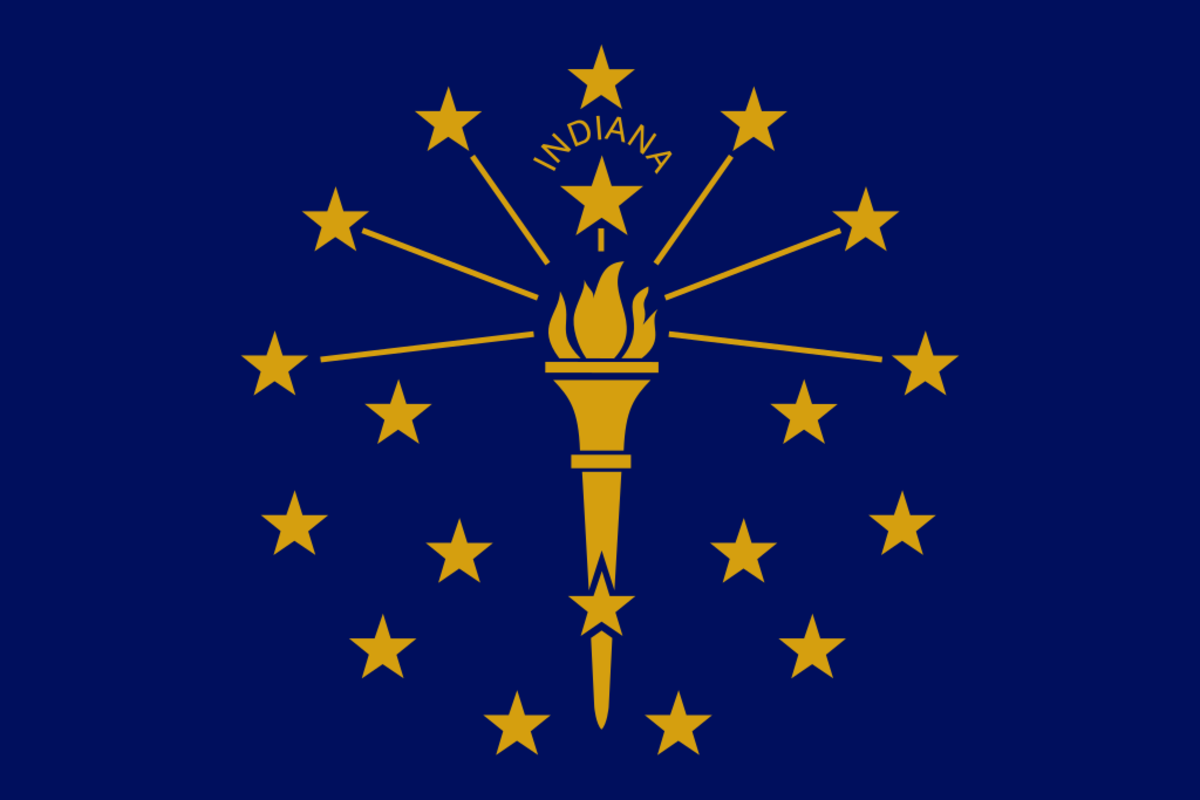Indiana Medical Malpractice Laws

In May 2023, Fort Wayne resident Zandra Chapman was awarded more than $2.6 million in damages at the conclusion of a medical malpractice action she filed in 2014. She was left with a polymer in the artery of her right leg following a cardiac catheterization procedure performed on her in 2012. The incident resulted in blood clotting, intense pain, and the disfigurement of her leg.
Chapman’s case is an example of the long-term problems brought by medical malpractice, which can always catch patients off guard. Throughout 2022 and within the first three months of 2023, the National Practitioner Data Bank recorded over 900 malpractice cases in Indiana, highlighting the relative prevalence of these cases.
While malpractice incidents can lead to losses, health complications, and legal burdens, Indiana has laws that help those who have suffered harm due to the negligence of a doctor or healthcare provider. This article will discuss these laws to guide citizens in the state with relevant cases.
What Qualifies as Medical Malpractice in Indiana?
Under Title 34, Article 18 of the Indiana Code, medical malpractice refers to a “tort or breach of contract” based on the healthcare services provided to a patient by a medical provider or practitioner. The tort or breach in question occurs when the provider or practitioner fails to exercise proper care in treating their patient, resulting in the latter’s injury or death.
Common examples of medical malpractice include the following:
Misdiagnosed illnesses;
Surgical errors;
Anesthetic mistakes;
Premature discharges;
Birth injuries;
Errors related to prescribed medication;
Failure to identify or diagnose an illness or condition;
Failure to provide information regarding a specific medical treatment.
It should be noted that in Indiana, medical malpractice and medical negligence are treated as the same concept. This was specified by the state’s Court of Appeals in its review of a medical malpractice lawsuit in 2012 to mitigate any confusion regarding the usage of these terms. This differs from certain states where medical malpractice and medical negligence have their own definitions.
Who Can You Sue for Medical Malpractice in Indiana?
When medical malpractice occurs in Indiana, the doctor or medical practitioner who caused the patient’s injury or death is often the first one to be sued. However, plaintiffs may also sue other parties, such as:
The nurses who were assisting the doctor or practitioner when the malpractice occurred;
The hospital or facility where the doctor works;
Pharmacists (if the malpractice was caused by the wrong dosage of medication or because the pharmacist involved did not relay the proper instructions on how to use a specific drug).
When initiating a medical malpractice action, a plaintiff must first submit their proposed complaint to the Department of Insurance as a prerequisite. A panel of three healthcare professionals and one attorney will review the complaint, during which the plaintiff can submit any documents or evidence to support their claim.
Once the panel has finished reviewing the complaint, the plaintiff may proceed to take their case to court. The review process can be bypassed if the plaintiff and the defendant agree in writing to do so or if the plaintiff wishes to recover no more than $15,000 in damages.
Exemptions
Indiana’s Good Samaritan Law
Medical malpractice victims in Indiana must note that the state has a Good Samaritan law. This protects individuals from being held liable for ordinary negligence that may cause personal injury when they provide reasonable medical care in good faith in an emergency without expecting compensation.
As such, an off-duty provider may be immune from any liability for providing medical aid to wounded or ill people in an accident or any other emergency.
However, the Good Samaritan law does not apply if the individual providing aid acts with willful or wanton misconduct or gross negligence. A doctor also cannot be immune from liability for providing emergency aid to a person who is already under their care as a patient.
Tort Claims Act
The Indiana Supreme Court abolished the state’s sovereign immunity law in 1972, meaning government entities and their workers can no longer be rendered immune from liability. This means medical malpractice victims are not barred from filing a lawsuit against a government agency or employee in the state for negligence.
Despite this change, potential plaintiffs must adhere to strict provisions enforced through Indiana’s Tort Claims Act if they wish to pursue a claim against the government. For example, the law states that a tort claim must be filed within a specific period. The deadlines, which are shorter than the statute of limitations for most medical malpractice claims, will be discussed later in the article.
Medical Malpractice Liability Insurance Requirements
As part of Indiana’s Medical Malpractice Act, the Patient’s Compensation Fund was implemented to ensure the applicability of the Act’s provisions to healthcare providers. Simply put, any doctor or practitioner who participates in the PCF will be covered by the Act, which will also affect any medical malpractice actions that may be filed against them.
To participate in the PCF, a provider must first pay an annual surcharge and obtain proof of financial responsibility. The latter is done by purchasing medical malpractice liability insurance coverage equal to the caps on the total damages that can be recovered from them in a case.
If they are covered by the PCF, a doctor involved in a medical malpractice claim or lawsuit will only be liable for the maximum amount of damages covered by their insurance, as stated above. In case the total awarded damages exceed this maximum amount, the PCF will cover the remaining damages.
Under the PCF’s provisions, the payment given to the plaintiff through the Fund can be done through either a lump sum payment, a purchased annuity that is payable to the plaintiff, periodic payments through the course of a few years, or any combination of these options.
What Is the Statute of Limitations in Indiana for Medical Malpractice Cases?
According to the Medical Malpractice Act, victims have a maximum of two years to take legal action, starting from the date when the malpractice occurred. The countdown to this deadline is “tolled” or paused for 90 days once a plaintiff submits their proposed complaint to the state’s Insurance Commissioner.
The two-year statute of limitations still applies even if the victim in question is under the age of 18 or mentally incapacitated. However, there is an exception for victims who are younger than the age of six. In these cases, their representative, parent, or guardian will be given until the child’s eighth birthday to initiate a claim.
For Non-qualified Providers
The two-year statute of limitations differs for healthcare practitioners and providers who are not qualified for coverage under the Medical Malpractice Act. These are those who did not pay the surcharge for the PCF and obtain proof of financial responsibility.
Because the Act does not cover them, these individuals will be subject to the provisions of Indiana’s statute of limitations for injury cases in general. This means that if their victim is younger than 18 or mentally incapacitated, the victim will be given two years after they turn 18 or recover from their incapacitation to pursue a claim, as opposed to only two years regardless of their legal disability.
The Discovery Rule
Under Indiana’s discovery rule, the statute of limitations will only begin on the date when the victim of medical malpractice discovers or should have reasonably discovered their injury and the alleged malpractice that caused it.
According to the Indiana Supreme Court, simply discovering the injury or suspecting malpractice is not enough to start the statute’s countdown. On the other hand, it stated that a plaintiff is not required to know with certainty that an incident of malpractice did occur and cause injury.
The Court also declared that a plaintiff has enough reason to seek legal and medical advice if their doctor states that they have an injury and that it may have been caused by a specific action that occurred at a certain time.
Fraudulent Concealment
Another legal factor that can influence a malpractice case and the statute of limitations is fraudulent concealment. This refers to a defendant's active or passive efforts to conceal their malpractice from a victim to delay or prevent them from filing a complaint within the two-year deadline.
Provisions of the Tort Claims Act
As mentioned above, Indiana’s Tort Claims Act also imposes other deadlines for those who wish to sue a government agency or employee for medical malpractice. These deadlines, which start counting down from the date of the alleged malpractice, are as follows:
For claims against the state, a person must notify the state agency involved or the Attorney General within 270 days;
For claims against a political subdivision, a person must notify the subdivision’s governing body within 180 days.
A governmental entity is given a maximum of 90 days to approve or deny a tort claim. A claim is considered denied if no decision has been made within this time frame. A plaintiff can only take the matter to court if their claim has been denied either in part or in whole.
What Do You Need to Prove in an Indiana Medical Malpractice Case?
The victim in a medical malpractice case in Indiana must prove that the defendant failed to follow the medical standard of care, which is the professional standard that all healthcare providers must follow when attending to their patients. Proving the defendant’s failure is accomplished by identifying the following legal elements:
The defendant owed the victim a duty of reasonable care in line with medical standards;
The defendant breached that duty by failing to meet the required standards;
The defendant’s breach of duty resulted in harm to the victim.
Victims can prove the other party’s negligence by using relevant evidence, including patient records and testimonies from expert witnesses. Oftentimes, these are healthcare practitioners or providers who work in the same field as the defendant.
Res Ipsa Loquitur
The legal principle of res ipsa loquitur may also be used in certain malpractice cases, particularly in incidents where a foreign object was left in the victim’s body. In these instances, the harm that the victim suffered can be considered sufficient proof of the defendant’s negligence. For the principle to apply, the victim must prove that the injury could not have occurred if the defendant had not acted negligently.
Indiana’s Apology Law
Indiana also follows an apology law, which states that any communication of sympathy from a defendant will not be treated as admissible evidence in a case. This means that, unless specified otherwise by state law, a doctor’s apology for a patient’s injury is not usable as proof of their negligence in a medical malpractice action.
How Much Can You Sue for Medical Malpractice in Indiana?
The total damages that medical malpractice victims in Indiana can recover depend on their respective cases. While there is no determinable average for what a victim can recover, this section will provide an overview of the damages and factors involved.
Types of Damages
The recoverable damages in a medical malpractice case include economic and non-economic ones. The former category involves monetary losses stemming from a victim’s further treatment and any wages they have lost due to their injury, while the latter includes non-tangible losses caused by a victim’s pain and suffering.
To determine the damages they can recover, victims may seek advice from an attorney who will assist them in calculating their total losses.
Damage Caps
The total damages that medical malpractice plaintiffs can recover are capped at the following amounts:
$1.65 million for any malpractice incident that occurred between July 1, 2017 and June 30, 2019;
$1.8 million for any malpractice incident that occurred from July 1, 2019 onwards.
Additionally, the damages that can be recovered from healthcare providers are limited to:
$400,000 for any malpractice incident that occurred between July 1, 2017 and June 30, 2019;
$500,000 for any malpractice incident that occurred from July 1, 2019 onwards.
As specified in a previous section, these caps are the minimum amounts of medical malpractice insurance that healthcare providers must obtain to qualify for the Patient’s Compensation Fund.
Meanwhile, if a tort claim stemming from medical malpractice is made against the state, the total recoverable damages are limited to $700,000 (for a single claimant) and $5 million (for a single occurrence).
Negligence System
Indiana follows the legal doctrine of modified comparative negligence in medical malpractice cases. This means that if a plaintiff is partially liable for their injury, their total damages will be deducted by a percentage equal to their fault in the case. If their fault reaches or exceeds 51 percent, they will be barred from recovering damages.
However, for tort claims made against the state, the doctrine of pure contributory negligence is followed instead. Under this rule, a partially liable plaintiff is prohibited from recovering damages regardless of their fault percentage.
Methods of Obtaining Compensation
Other than pursuing a lawsuit, medical malpractice victims in Indiana can choose to address their complaint through mediation. This would allow them to reach a compromise with other parties in a confidential discussion overseen by a licensed mediator. This would also help them avoid the higher legal costs and complications often involved in taking a case to court.
How Much Does It Cost to Pursue a Medical Malpractice Case in Indiana?
When filing a medical malpractice complaint with the Indiana Department of Insurance, complainants must take note of the filing fee of $5 for the complaint’s initial defendant. If there are multiple defendants, a complainant must pay an additional $2 for each of them. These fees can be paid through checks or money orders payable to the department.
Indiana also has a law governing contingency fees in medical malpractice actions. These are the fees that an attorney will receive for their services, and they are taken from the total amount of damages awarded to a plaintiff.
As of July 1, 2017, attorneys are entitled to receive up to 32 percent of a plaintiff’s awarded damages as their contingency fee. Plaintiffs can choose to pay the fee on a per diem basis by creating a written agreement with their attorney at the time that they employ their services.
Legal Resources for Medical Malpractice Victims in Indiana
Indiana Department of Insurance
The Indiana Department of Insurance provides instructions on how to file a medical malpractice complaint on its website. It also has a sample complaint form that users can refer to and additional information on how to find a specific healthcare provider’s name in the Patient’s Compensation Fund database. For other questions involving complaints, people can contact the Department’s Medical Malpractice Program Specialist, Debra Ashman, at either (317) 232-5253 or Dashman@idoi.in.gov.
Indiana State Bar Association
The Indiana State Bar Association can assist people involved in civil cases through its website’s public services. Users can access the Locate Your Lawyer service to look for the contact information of attorneys within their respective areas. In addition, they can refer to the website for information on filing complaints against lawyers or pursuing compensation for losses caused by lawyer dishonesty.
Indiana Medicaid
The Indiana Medicaid website is open to any state residents who wish to apply for Medicaid coverage. Those who have been injured through medical malpractice can visit the site to check their eligibility for coverage or browse its directory for Medicaid providers close to their location. They can also find information on various health plans that cover children, pregnant women, and the elderly, as well as those suffering from disabilities. The website has accessibility settings that can assist those who have vision or hearing impairments and translation settings for users who do not speak English.
Expertise.com StaffAuthor
At Expertise.com, we're passionate about guiding people to find the best in life, whether they're researching how to start a small business, planning a home remodeling project, or discovering a new hobby.




